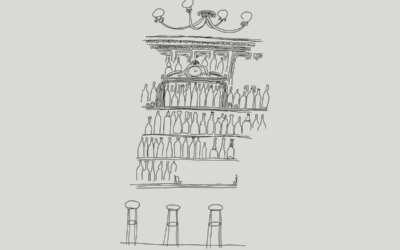What’s ironic about a luxury NFT handbag? It will never get into your hands. Metaverse brings new challenges for luxury brands.
To meet luxury standards, selectivity and exclusivity are a must. In the luxury sector, we know that distribution must be the definition of selectivity and exclusivity. The ultimate goal is to control distribution to guarantee the image and reputation of the house. However, luxury houses are forced to profoundly modify their distribution strategy in line with the evolution of consumption and society as a whole. However, apart from the sale or resale of luxury products, brands, regardless of their location, have always faced the same problem, namely counterfeiting. They have managed, each at their own pace, to differentiate themselves thanks to their invaluable know-how, which enables them to distinguish genuine products from counterfeits. In the context of this development, a new type of sale is possible. For brands that wish to do so, it is now possible to buy luxury products not only online, but also virtually and, in particular, through the metaverse. Yes, it is an original and bold idea, but sometimes problematic.
Metaverse vs luxury products – when opposites attract
The contrast here is that luxury should be an industry that tightly controls its distribution channels to minimize collateral damage and maximize sales. However, luxury should also bring us personal satisfaction through the many experiences (customer, store, purchase) that the sales consultant brings us when we visit the store. This ranges from the sensory experience to the unique know-how of the house, which has its own history, stories, etc. On the other hand, this coveted sensory experience no longer exists in the metaverse.
In this virtual world, and given that we have nothing to learn from these houses that we already know, it would now be a virtual purchase of a luxury product just because it is a luxury product. Not necessarily, you might say. It is true that by combining metaverse and luxury, the aim is also to reach and attract a new clientele familiar with digital technology, but also and above all to give everyone access to a parallel world in a different form. By combining augmented and virtual reality, the metaverse seeks to incorporate us into a parallel world where we could work, socialise and have fun by buying virtual products through NFT that we will officially own but never touch. Once we have mastered this (somewhat complex) concept, let’s move on to the facts.
A virtual world that faces the problems of the real world
In our case, we want to focus on the battle that all brands face – counterfeiting. Admittedly, imagining a parallel world where we could do everything can be quite dreamy. That’s why many brands have started to innovate and offer their products in the form of NFTs. Among them, we can find brands such as Guerlain, Gucci, Bvlgari, Porsche, Balmain or Nike. In this approach, the houses aim to appeal to a younger clientele while offering an innovative customer experience to reinforce a sense of preciousness and brand affection. That being said, in the case of metaverse, anything is possible, but then how can brands limit and secure the scope of use of their products? This virtual world, for now without restrictions, allows anyone to use the brand’s products as they please. Brands and luxury houses thus have a strong interest in securing and controlling the use of their image to protect their reputation in the face of this new digital phenomenon.
Metabirkin, a virtual variation of the iconic bag: a tribute or a fake?
Každý umělec najde inspiraci tam, kde chce. Sometimes, however, such inspiration tends to slightly copy the original idea.
The metaverse is a virtual space not very well used on all levels and without a truly structured framework. Mason Rothschild uvedl vrcholný začátek třenic mezi značkou a umělcem. He was “inspired” by the luxury house Hermes and subsequently brought to life, via NFT, a hundred fur bags representing (strongly) the Birkin model. He made excellent profits in cryptocurrency by selling his digital works.
But can we talk about counterfeiting if it is a product that exists virtually? For luxury brands, this question is increasingly relevant. The legal term counterfeiting basically refers to tangible objects. However, in the case of NFTs sold in the virtual world, we are dealing with elements that are intangible. It would logically follow that intellectual property rights should also apply in the virtual world. Přesto se zdá nevyhnutelné, že práva duševního vlastnictví budou ještě přísnější než ta současná. To counterfeit NFTs, it would be enough to copy/paste a digital work (despite the amount of code we receive when we acquire them) or to change only a small element that differs from the original work. Finally, we could ask ourselves how will this growing phenomenon be managed and regulated in the future?
The question in this case remains.



